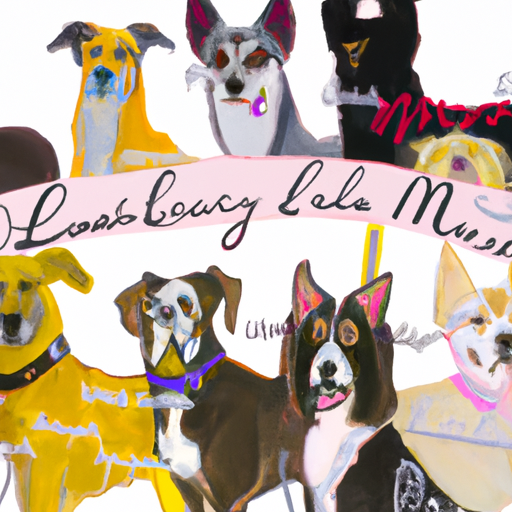As a caregiver of a furry friend, you understand the importance of choosing the perfect name for your new family member. This detailed guide will walk you through some of the most common female dog names and the story behind them.
1. Popular Female Dog Names
You might be wondering what the most common names for female dogs are. According to a survey conducted by the American Pet Products Association, the following are the top 10 female dog names:
- Bella
- Lucy
- Daisy
- Luna
- Lola
- Sadie
- Molly
- Bailey
- Maggie
- Stella
These names have remained popular over the years thanks to their simplicity and the ease with which dogs can recognize them.
2. The Meaning Behind Female Dog Names
Each name carries a unique meaning that could align well with your dog’s personality. Let’s delve deeper into the top five names:
- Bella: This name is derived from the Italian word for ‘beautiful’. It’s a fitting name for a dog that’s as beautiful inside as she is outside.
- Lucy: Lucy comes from the Latin word for ‘light’. It’s an excellent name for a dog who brings light into your life.
- Daisy: Named after the daisy flower, this name is synonymous with purity and innocence.
- Luna: Luna means ‘moon’ in Italian and Spanish. It’s a great name for a dog with a calm and serene demeanor.
- Lola: In Spanish, Lola is a short form of ‘Dolores’, which means ‘sorrow’. However, it’s often associated with strong, independent dogs.
3. Celebrity-Inspired Female Dog Names
If you’re a fan of pop culture, you might want to name your dog after a famous movie or TV character. Here are five celebrity-inspired names and the characters they’re associated with:
- Arya – from ‘Game of Thrones’
- Dory – from ‘Finding Nemo’
- Elsa – from ‘Frozen’
- Leia – from ‘Star Wars’
- Xena – from ‘Xena: Warrior Princess’
4. Unique Female Dog Names
If you’re looking for something less common, consider these unique female dog names:
- Zuri
- Quinoa
- Twix
- Vesper
- Yara
5. Choosing the Right Name for Your Dog
Choosing a name for your dog can be a fun and exciting process, but remember, it’s a name that both you and your dog will have to live with for a long time. Here are a few tips to make the process easier:
- Choose a name that’s easy to pronounce and short enough for your dog to recognize.
- Avoid names that sound like commands.
- Consider your dog’s personality and physical traits.
- Think about the names of people and pets you know to avoid confusion.
6. Changing a Dog’s Name
If you’ve adopted a dog with a name you don’t like, you can change it. Dogs are adaptable and can quickly learn to respond to a new name, especially if reinforced with treats and affection.
7. Frequently Asked Questions (FAQ)
Q: Should I let my children pick the name for our new dog?
A: Yes, involving children in the process can be a great way to teach them about responsibility. However, make sure the name they choose is appropriate and easy for the dog to understand.
Q: Can I change my dog’s name if she doesn’t respond to it?
A: Yes, you can change your dog’s name if she doesn’t respond to it. However, make sure to associate the new name with positive experiences to help her learn it quickly.
Q: What if other family members don’t like the name I’ve chosen for our dog?
A: Choosing a name for a dog should be a family decision. If someone doesn’t like a name, discuss it as a family and come to an agreement.
8. Conclusion
Choosing the right name for your dog is an important task, but it doesn’t have to be daunting. With this guide, you are now equipped with the knowledge you need to give your beloved pet a name that suits her personality and makes her feel like a part of the family. Happy naming!



